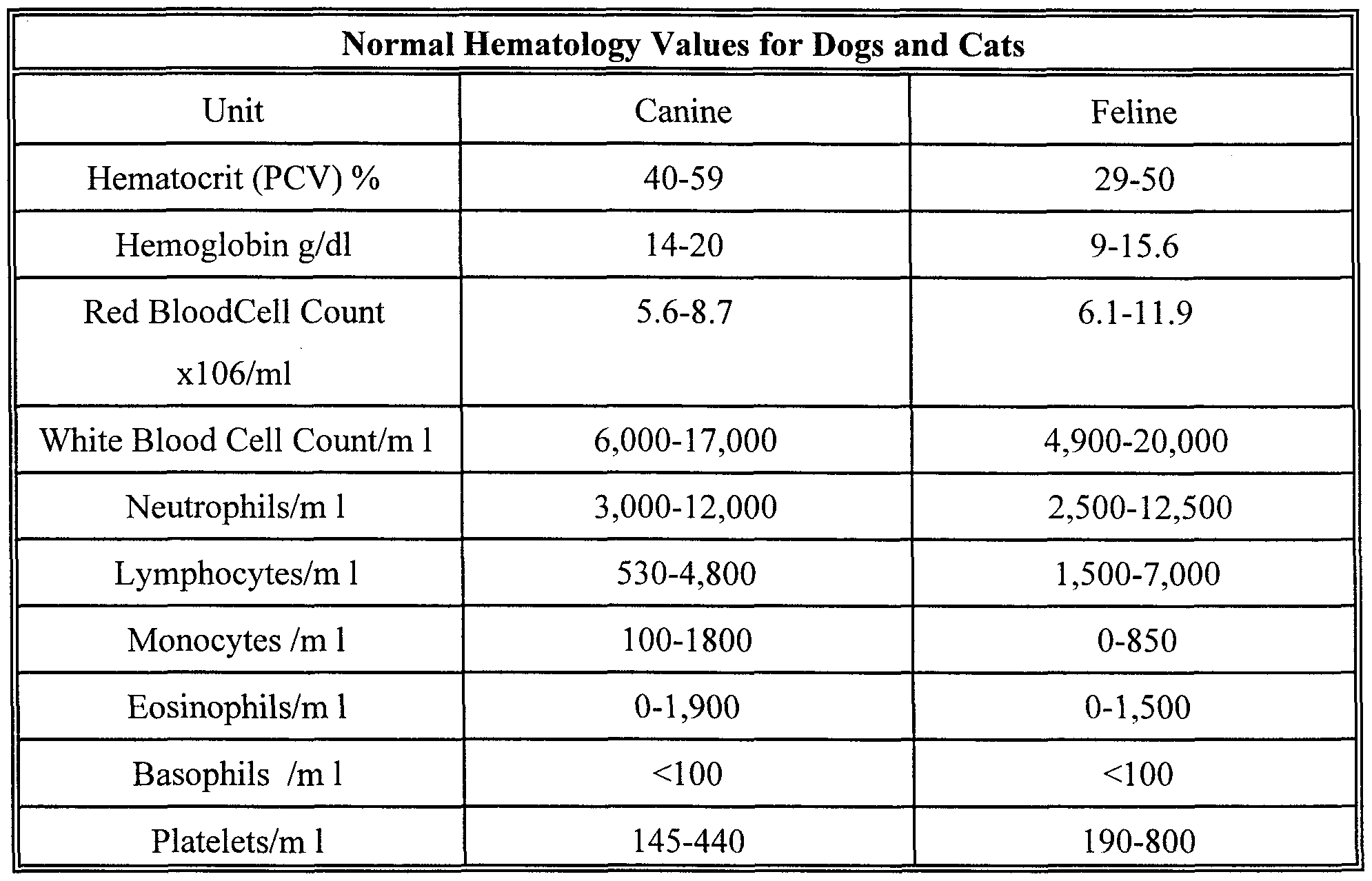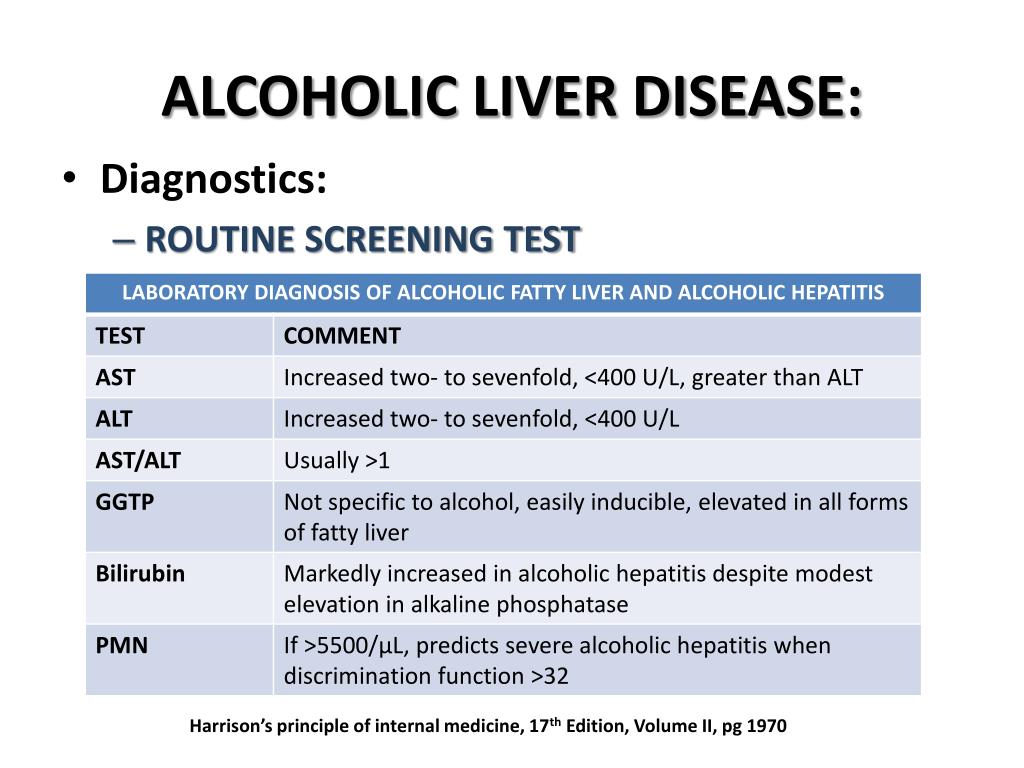Normal ast and alt values. Understanding AST and ALT: Normal Ranges, High Levels, and Liver Health
What are AST and ALT. How do these enzymes relate to liver function. What are the normal ranges for AST and ALT. What causes elevated levels of these enzymes. How are liver function tests interpreted.
What Are AST and ALT: Key Liver Enzymes Explained
AST (aspartate aminotransferase) and ALT (alanine aminotransferase) are crucial enzymes primarily associated with liver function. These aminotransferase enzymes play a vital role in amino acid metabolism and are often measured as part of liver function tests (LFTs).
AST, also known as SGOT (serum glutamic oxaloacetic transaminase), is found in various tissues, including the liver, heart, muscles, and kidneys. ALT, formerly called SGPT (serum glutamic pyruvic transaminase), is predominantly found in liver cells, making it a more specific indicator of liver health.
The Role of AST and ALT in the Body
These enzymes catalyze chemical reactions involving amino group transfer between amino acids. Their presence in the bloodstream can indicate cellular damage, particularly in the liver. When liver cells are injured or die, these enzymes are released into the blood, causing elevated levels detectable through blood tests.

Normal Ranges for AST and ALT: What’s Considered Healthy?
Understanding the normal ranges for AST and ALT is crucial for interpreting liver function test results. The generally accepted normal ranges are:
- AST (SGOT): 5 to 40 units per liter of serum
- ALT (SGPT): 7 to 56 units per liter of serum
It’s important to note that these ranges can vary slightly between laboratories and may be influenced by factors such as age, gender, and overall health status.
Interpreting AST and ALT Levels
When interpreting AST and ALT levels, healthcare providers consider not only the absolute values but also the ratio between these enzymes. An AST:ALT ratio greater than 2:1 may suggest alcohol-related liver disease, while a ratio less than 1 might indicate viral hepatitis or other liver conditions.
Elevated AST and ALT: Causes and Implications
Elevated levels of AST and ALT in the blood can indicate liver damage or disease. Some common causes of high AST and ALT include:
- Viral hepatitis (A, B, C)
- Alcoholic liver disease
- Nonalcoholic fatty liver disease (NAFLD)
- Drug-induced liver injury
- Autoimmune hepatitis
- Cirrhosis
- Liver cancer
It’s crucial to understand that while elevated AST and ALT levels suggest liver damage, they don’t specify the cause. Further diagnostic tests are often necessary to determine the underlying condition.

When Are AST and ALT Levels Considered High?
AST and ALT levels are typically considered elevated when they exceed the upper limit of the normal range. Mild elevations (less than 5 times the upper limit) may indicate chronic liver diseases, while more significant elevations (greater than 15 times the upper limit) often suggest acute liver injury, such as viral hepatitis or drug-induced liver damage.
Liver Function Tests: Beyond AST and ALT
While AST and ALT are crucial components of liver function tests, they are not the only parameters measured. A comprehensive liver panel typically includes:
- Albumin: A protein produced by the liver
- Total protein: Measures overall protein levels in the blood
- Alkaline phosphatase (ALP): An enzyme found in liver and bone
- Gamma-glutamyl transferase (GGT): Another liver enzyme
- Bilirubin: A waste product processed by the liver
- Prothrombin time (PT): Assesses blood clotting function
These tests, when interpreted together, provide a more comprehensive picture of liver health and function.
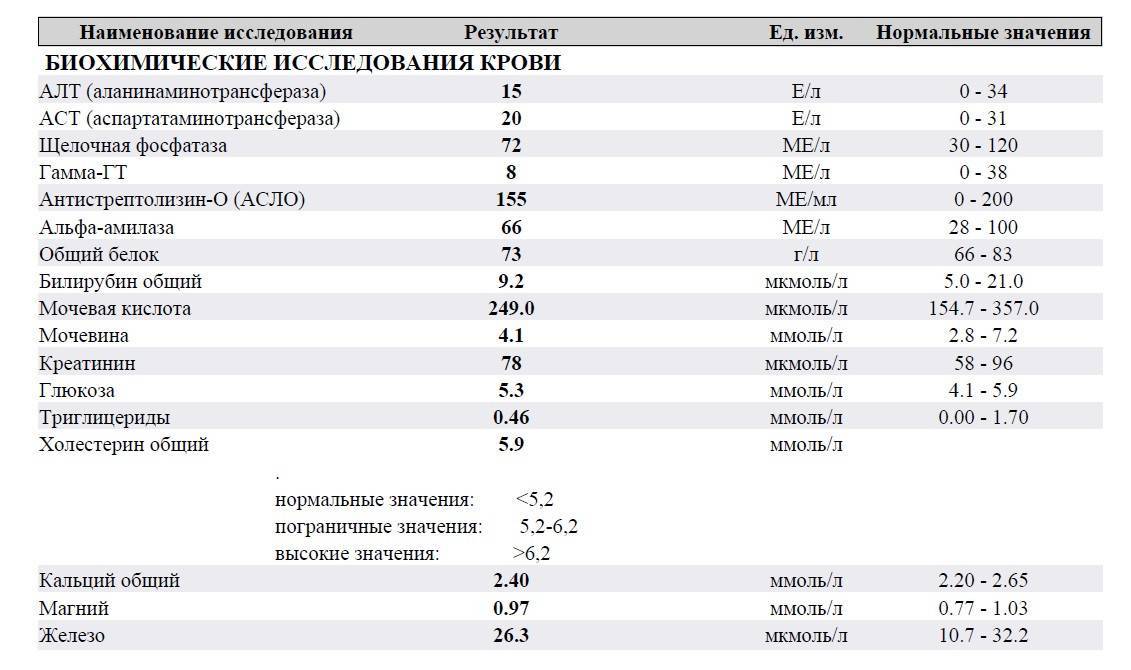
The Importance of AST and ALT in Diagnosing Liver Conditions
AST and ALT levels are valuable indicators in the diagnosis and monitoring of various liver conditions. Their elevation often precedes visible symptoms of liver disease, making them crucial for early detection and intervention.
AST vs. ALT: Which Is More Liver-Specific?
While both AST and ALT are important liver enzymes, ALT is considered more liver-specific. Elevated ALT levels are rarely observed in conditions other than liver disease, making it a more reliable indicator of liver health. AST, on the other hand, can be elevated due to damage in other organs, such as the heart or muscles.
Factors Affecting AST and ALT Levels
Several factors can influence AST and ALT levels, potentially leading to temporary elevations or fluctuations:
- Intense exercise or muscle injury
- Certain medications
- Obesity
- Alcohol consumption
- Pregnancy
- Thyroid disorders
Healthcare providers consider these factors when interpreting liver function test results to avoid misdiagnosis or unnecessary concern.

Monitoring AST and ALT: Importance in Liver Disease Management
Regular monitoring of AST and ALT levels is crucial in managing chronic liver conditions. These enzymes serve as valuable markers for assessing disease progression, treatment efficacy, and potential complications.
Frequency of Testing
The frequency of AST and ALT testing depends on the specific liver condition and its severity. Patients with chronic hepatitis, for instance, may require more frequent monitoring compared to those with stable, well-controlled liver disease.
Beyond Liver Disease: Other Conditions Affecting AST and ALT
While AST and ALT are primarily associated with liver health, elevated levels can sometimes indicate issues in other organs or systems:
- Muscular disorders: Conditions like muscular dystrophy can cause elevated AST levels
- Cardiac events: Heart attacks may lead to temporary AST elevation
- Hemolysis: Breakdown of red blood cells can affect AST levels
- Celiac disease: Can cause mild elevations in both AST and ALT
This underscores the importance of considering a patient’s overall health and symptoms when interpreting AST and ALT results.

Lifestyle Changes to Improve AST and ALT Levels
For individuals with elevated AST and ALT levels, certain lifestyle modifications can help improve liver health:
- Limiting alcohol consumption
- Maintaining a healthy weight
- Following a balanced, liver-friendly diet
- Regular exercise
- Avoiding hepatotoxic substances
- Managing underlying conditions like diabetes or high cholesterol
These changes can significantly impact liver enzyme levels and overall liver function, potentially slowing or reversing liver damage in some cases.
AST and ALT in Children: Special Considerations
Interpreting AST and ALT levels in children requires special attention. Normal ranges for these enzymes can vary with age, and certain pediatric conditions may affect liver enzyme levels differently than in adults.
Common Causes of Elevated Liver Enzymes in Children
- Viral infections
- Autoimmune hepatitis
- Metabolic disorders
- Obesity-related fatty liver disease
- Medication side effects
Pediatricians consider these factors along with the child’s overall health and development when interpreting liver function test results.

Future Directions in Liver Function Testing
While AST and ALT remain cornerstone tests in assessing liver health, research continues to explore new biomarkers and testing methods for more accurate and comprehensive liver function assessment.
Emerging Biomarkers
Researchers are investigating novel biomarkers that may provide more specific information about liver health and disease progression. These include:
- Cytokeratin-18 fragments
- MicroRNAs
- Fibrosis markers like FibroTest and Enhanced Liver Fibrosis (ELF) score
These emerging tests may offer additional insights into liver health, complementing traditional AST and ALT measurements.
Conclusion: The Vital Role of AST and ALT in Liver Health Assessment
AST and ALT are indispensable tools in evaluating liver health and function. Their levels provide crucial information about potential liver damage or disease, guiding diagnostic and treatment decisions. While elevated levels warrant attention, it’s essential to interpret these results in the context of a patient’s overall health profile and other diagnostic tests.
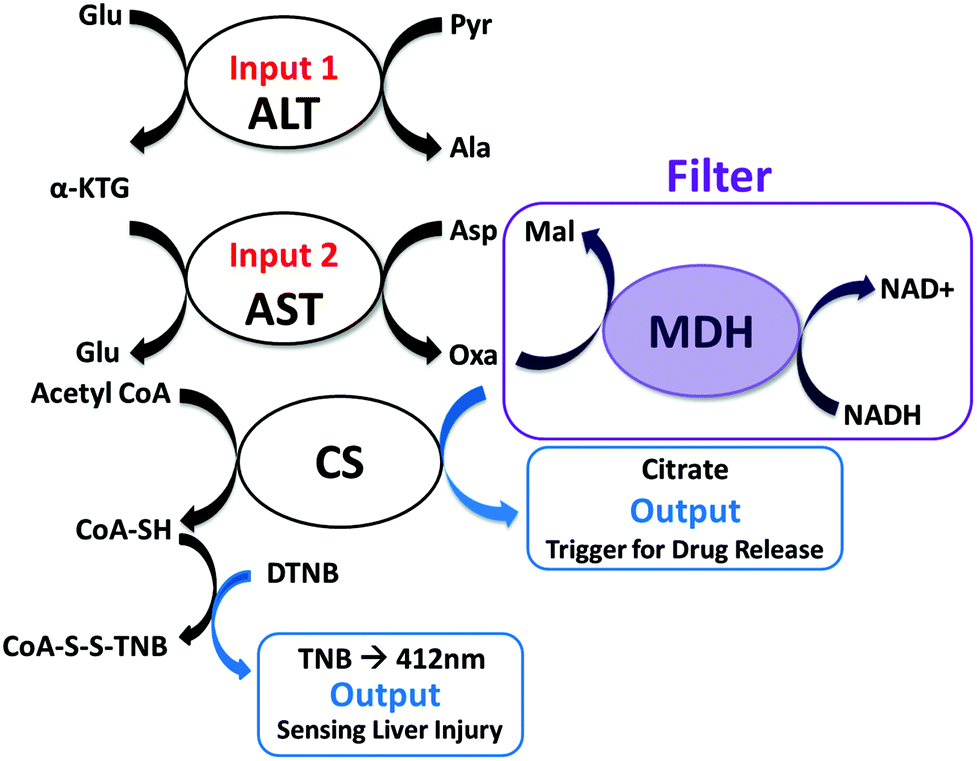
As our understanding of liver function and disease continues to evolve, AST and ALT remain fundamental components of liver health assessment. Their measurement, along with other liver function tests, plays a vital role in early detection, monitoring, and management of liver conditions, ultimately contributing to better patient outcomes and improved liver health.
Liver Function Tests-Ranges-High & Low
Liver Function Tests (LFT)
Liver function tests (LFT) are blood tests, which are commonly performed to assess liver functions or liver injury. LFT is also known by other names such as, liver panel, liver function panel, liver profile hepatic function panel, LFT.
An initial step in detecting liver damage is a simple blood test to determine the level of certain liver enzymes (proteins) in the blood. Under normal circumstances, these enzymes mostly reside within the cells of the liver.
But when the liver is injured for any reason, these enzymes are spilled into the blood stream. Enzymes are proteins that are present throughout the body, each with a unique function.
Enzymes help to speed up (catalyze) routine and vital chemical reactions in the body.
Liver function tests (also known as a liver panel) are blood tests that measure different enzymes, proteins, and other substances made by the liver. These tests check the overall health of the liver.
These tests check the overall health of the liver.
Following are the different substances often tested at the same time on a single blood sample for LFT:
- Albumin a protein made in the liver
- Total protein. This test measures the total amount of protein in the blood.
- ALP ALP(alkaline phosphatase), ALT (alanine transaminase), AST (aspartate aminotransferase), and gamma-glutamyl transferase (GGT). These are different enzymes made by the liver.
- Bilirubin, a waste product made by the liver.
- Lactate dehydrogenase (LD), an enzyme found in most of the body’s cells. LD is released into the blood when cells have been damaged by disease or injury.
- Prothrombin time (PT), a protein involved in blood clotting.
If levels of one or more of these substances are outside of the normal range, it may be a sign of liver disease.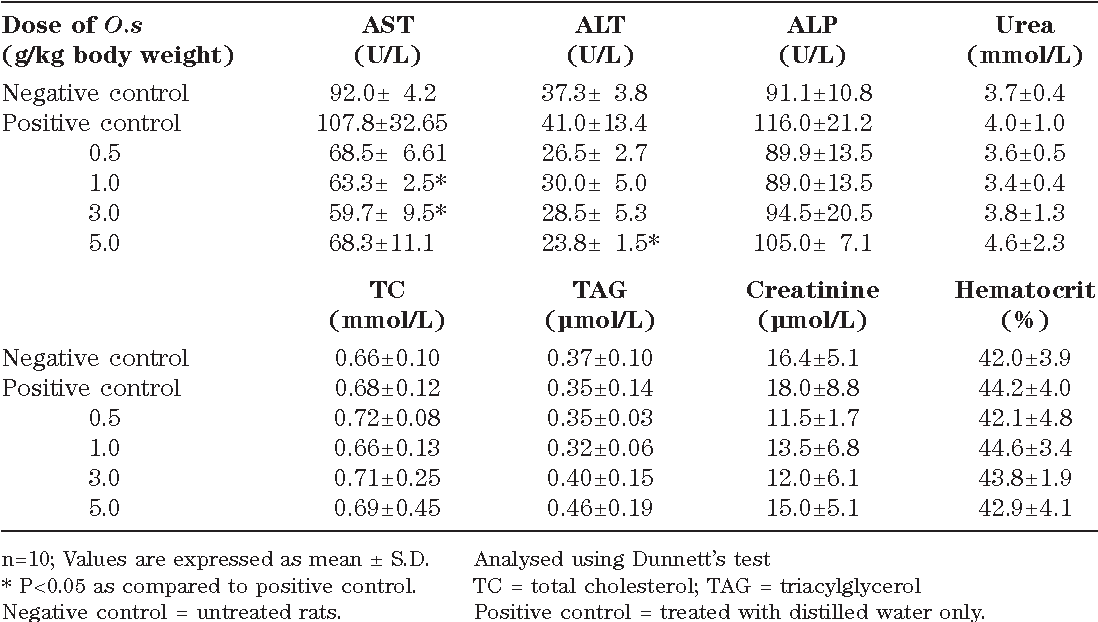
Aminotransferase Enzymes (ALT, AST)
The aminotransferase enzymes catalyze chemical reactions in which an amino group from one amino acid (amino acids are building blocks of proteins) is transferred from a donor molecule to a recipient molecule, hence, the names “aminotransferases.”
Medical terms can sometimes be confusing, as is the case with these enzymes because they have interchangeable names that commonly appear in both medical and non-medical articles. For example:
- Another name for aminotransferase is transaminase.
- The enzyme aspartate aminotransferase (AST) is also known as serum glutamic oxaloacetic transaminase (SGOT).
- Alanine aminotransferase (ALT) is also known as serum glutamic pyruvic transaminase (SGPT).
Briefly, AST = SGOT and ALT = SGPT; they are enzymes produced by the liver and other types of cells.
Alanine aminotransferase (ALT)
Alanine aminotransferase (ALT) is present primarily in liver cells. In viral hepatitis and other forms of liver disease associated with hepatic necrosis, serum ALT is elevated even before the clinical signs and symptoms of the disease appear.
Although serum levels of both aspartate aminotransferase (AST) and ALT become elevated whenever disease processes affect liver cell integrity, ALT is a more liver-specific enzyme.
Serum elevations of ALT are rarely observed in conditions other than parenchymal liver disease. Moreover, the elevation of ALT activity persists longer than does AST activity.
Aspartate Aminotransferase (AST)
Aspartate aminotransferase (AST) is a transaminase enzyme that catalyzes the conversion of aspartate and alpha-ketoglutarate to oxaloacetate and glutamate.
The AST enzyme was formerly known as serum glutamate oxalate transaminase (SGOT) and is present in all tissues except bone, with highest levels in liver and skeletal muscle.+SI+units+(mmol/L)+Toxic+levels.+(mg/dL).jpg) Concentration of AST is elevated after bruising, trauma, necrosis, infection, or neoplasia of liver or muscle.
Concentration of AST is elevated after bruising, trauma, necrosis, infection, or neoplasia of liver or muscle.
The AST enzyme is found in cerebrospinal fluid, exudates, and transudates in proportion to the amount of cellular damage.
Where AST (aspartate aminotransferase) and ALT (aminotransferase enzymes) are Found
AST (SGOT) is normally found in a variety of tissues including the liver, heart, muscle, kidney, and brain. It is released into the serum when any one of these tissues is damaged.
For example, the AST level in serum is elevated in heart attacks or with a muscle injury. It is, therefore, not a highly specific indicator of liver injury as its elevation can occur as a result of other injured tissues.
ALT (SGPT) is, by contrast, normally found largely in the liver. This is not to say that it is exclusively located in the liver, but that is where it is most concentrated.
It is released into the bloodstream as the result of liver injury. Thus, it serves as a fairly specific indicator of liver status.
High (Elevated) Levels of AST and ALT
Following are the normal ranges of AST and ALT:
- The normal range of values for AST (SGOT) is about 5 to 40 units per liter of serum (the liquid part of the blood).
- The normal range of values for ALT (SGPT) is about 7 to 56 units per liter of serum.
The ranges of AST and ALT numbers may differ slightly depending on the technique and protocols used by different laboratories worldwide. However, normal reference ranges are routinely provided by each laboratory and printed with each patient’s individual report.
AST (SGOT) and ALT (SGPT) are reasonably sensitive indicators of liver damage or injury from different types of diseases or conditions, and collectively they are termed liver tests or liver blood tests.
However, it must be emphasized that higher-than-normal levels of these liver enzymes should not be automatically equated with liver disease. They may mean liver problems or they may not.
For example, elevations of these enzymes can occur with muscle damage. The interpretation of elevated AST and ALT results depends upon the entire clinical evaluation of an individual, and so it is best done by physicians experienced in evaluating liver disease and muscle disease.
Moreover, the precise levels of these liver enzyme tests do not correlate well with the extent of liver problems or the prognosis (outlook). Thus, the exact levels of AST (SGOT) and ALT (SGPT) cannot be used to determine the degree of liver disease or predict the future prognosis for liver function.
For example, patients with acute viral hepatitis-A may develop very high AST and ALT levels (sometimes in the thousands of units/liter range), but most patients with acute viral hepatitis-A recover fully without residual liver disease.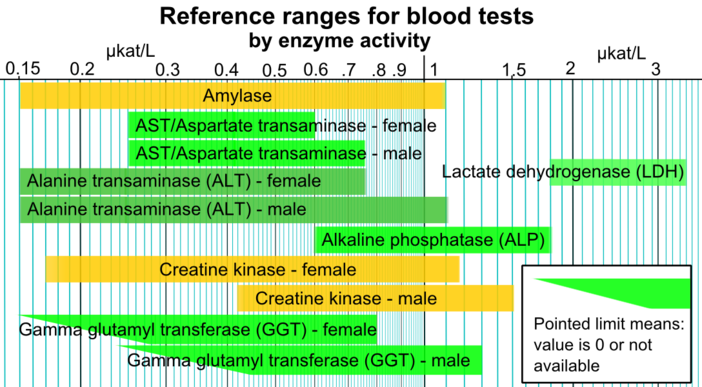
Again, patients with chronic hepatitis-C infection typically have only a little elevation in their AST and ALT levels while having substantial liver injury and even advanced scarring of the liver (cirrhosis) from ongoing minor inflammation of the liver.
Types of Liver Function Tests (LFT)
A liver function test is one of a group of tests that check levels of certain enzymes and other proteins in the blood. Some of the tests look for enzymes that are found in liver disease and when the liver is damaged. Others check that the liver is working properly, the way it should.
Following are some of the blood tests reflect liver function:
- Coagulation panel (prothrombin time or PT, and international normalized ratio or INR): These tests measure blood’s ability for normal clotting and prevention of bleeding and bruising. This is the function of certain proteins called clotting factors that normally are produced in the liver.
 Normal values are about 9.5 to 13.8 seconds.
Normal values are about 9.5 to 13.8 seconds. - Albumin level (hypoalbuminemia): Albumin is a very common protein found in the blood with a variety of functions. It also is produced only in the liver, and if its levels are lower than normal it can be suggestive of chronic liver disease or liver cirrhosis. Of note, many conditions other than liver disease also may cause low albumin levels. Normal values are about 3.5 to 5 g/dL.
- Bilirubin: This molecule is a byproduct of the routine destruction of red blood cells occurring in the liver. It is normally released as bile in the feces. Elevation of the bilirubin can suggest liver dysfunction. However, other conditions with increased destruction of red blood cells also can cause elevated bilirubin levels despite normal liver function. Normal values are about 0.1 to 1.0 mg/dL.
- Platelet count: Low platelet count (thrombocytopenia) has many causes, one of which can be advanced liver disease.
 Normal platelet counts are about 150,000 to 400,000 per (µL).
Normal platelet counts are about 150,000 to 400,000 per (µL). - Glucose: Glucose level is maintained in the body by a variety of mechanisms. The liver can release glucose in the blood for nourishment of other cells in case of starvation with insufficient oral intake of glucose. This process, called gluconeogenesis, is another major function of the liver. In advanced liver disease, this function of the liver can be compromised leading to unusually low glucose levels in the absence of adequate oral intake. Again, a large number of patients with liver cirrhosis become glucose intolerant and develop diabetes.
- GGT (Gamma-glutamyl transpeptidase): This enzyme is thought to indicate possible liver damage; the higher the abnormal level, the more likely there is liver damage. Normal levels of GGT are about 9 to 48 U/L.
- ALP (alkaline phosphatase): The liver synthesizes the highest amounts of this enzyme so high levels in the blood may suggest liver injury among other causes.
 Normal levels of ALP are about 45 to 115 U/L.
Normal levels of ALP are about 45 to 115 U/L. - LD or LDH (Lactate dehydrogenase): This enzyme may be elevated in many types of diseases, including liver disease. Normal levels are about 122 to 222U/L.
Reasons for Abnormal Liver Tests
Abnormal liver tests may be detected a variety of liver conditions in the blood. Some of those are the following:
- Mild to moderate elevations of the liver enzymes are common. They are often unexpectedly encountered on routine blood screening tests in otherwise healthy individuals. The AST and ALT readings in such cases are usually between twice the upper limits of normal and several hundred units/liter. One of the most common causes of mild to moderate elevations of these liver tests is a condition referred to as fatty liver disease (steatohepatitis or hepatic steatosis). In the United States, the most frequent cause of fatty liver disease is alcohol abuse.

Alcoholic fatty liver disease only happens in people who are heavy drinkers, especially those who have been drinking for a long period of time.
The risk is higher for heavy drinkers who are women, have obesity, or have certain genetic mutations.
Other causes of fatty liver include diabetes mellitus, and obesity. Fatty liver disease tests are composed of several tests including blood tests, CT and/or MRI scan tests, and in some patients, a liver biopsy.
- Hepatitis-B and Hepatitis-C are other causes of chronic mild to moderate liver enzyme elevation. In these conditions, ALT and AST may be only slightly high and the degree of abnormality in liver function tests can indicate the degree of injury.
- Chronic and acute alcohol use also can commonly cause abnormal liver blood tests. In alcoholic hepatitis, the range of liver tests can vary greatly.
 In chronic alcohol liver disease or alcoholic cirrhosis, slight elevation of ALT and AST may be observed, whereas, in acute alcoholic hepatitis, high liver enzyme numbers are often seen.
In chronic alcohol liver disease or alcoholic cirrhosis, slight elevation of ALT and AST may be observed, whereas, in acute alcoholic hepatitis, high liver enzyme numbers are often seen. - Some medications can be responsible for a mild to moderate increase in the liver enzyme tests.
Medications that can cause increased liver enzyme tests (AST and ALT) levels
Following are examples of some of the common medications with potential liver toxicity:
Pain Relief Medications
- Aspirin
- Acetaminophen (Tylenol)
- Ibuprofen (Advil, Motrin)
- Naproxen (Naprosyn, Naprelan, Anaprox, Aleve)
- Diclofenac (Voltaren, Cataflam, Voltaren-XR)
- Phenylbutazone (Butazolidine)
Anti-seizure Medications
- Phenytoin (Dilantin)
- Valproic acid ( Depakote)
- Carbamazepine (Tegretol)
- Phenobarbital
Antibiotics
- Tetracyclines (Achromycin)
- Sulfonamides
- Isoniazid (Nydrazid, Laniazid)
- Sulfamethoxazole (Gantanol)
- Trimethoprim(Trimpex; Proloprim, Primsol)
- Nitrofurantoin (Macrodantin, Furadantin, Macrobid)
- Fluconazole (Dilflucan) and other anti-fungals
Cholesterol Lowering Drugs (Statins)
- Lovastatin (Mevacor, Altocor)
- Pravastatin (Pravachol)
- Atorvastatin (Lipitor)
- Fluvastatin (Lescol)
- Simvastatin (Zocor)
- Rosuvastatin (Crestor)
- Niacin
Cardiovascular Drugs
- Amiodarone (Cordaone)
- Hydralazine (Apresoline)
- Quinidine (Quinaglute, Quinidex)
Other Drugs
- Antidepressant drugs of the tricyclic type
With drug-induced liver enzyme abnormalities, the enzymes usually normalize weeks to months after stopping the medications. Typically, the physician will want to monitor the patient’s liver enzymes over time to confirm that the values are normalizing.
Typically, the physician will want to monitor the patient’s liver enzymes over time to confirm that the values are normalizing.
Diseases that can cause very high AST or ALT levels
AST and ALT serum levels in some liver conditions can range anywhere from ten times the upper limits of normal to thousands of units/liter.
The highest levels of AST and ALT are found with disorders that cause rapid death of numerous liver cells (extensive hepatic necrosis). Although this degree of liver enzymes elevation is not common, it can occur in such conditions as:
- Acute viral hepatitis A or B
- Profound liver damage inflicted by toxins as from an overdose of acetaminophen (brand-name Tylenol) or mushroom poisoning
- Prolonged collapse of the circulatory system (shock) when the liver is deprived of fresh blood providing oxygen and nutrients
Also, very high AST and ALT levels can be a result of severe muscle diseases.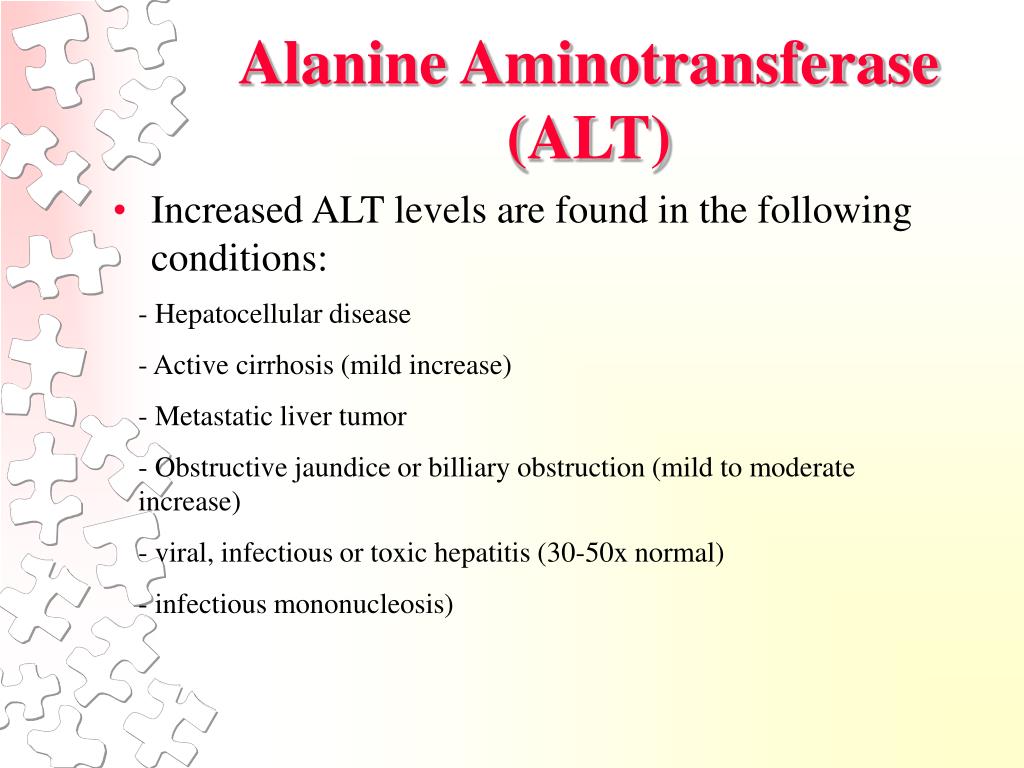
Bay Biosciences is a global leader in providing researchers with high quality, clinical grade, fully characterized human tissue samples, bio-specimens and human bio-fluid collections.
Samples available are cancer (tumor) tissue, cancer serum, cancer plasma cancer PBMC and human tissue samples from most other therapeutic areas and diseases.
Bay Biosciences maintains and manages its own bio-repository, human tissue bank (biobank) consisting of thousands of diseased samples (specimens) and from normal healthy donors available in all formats and types.
Our biobank procures and stores fully consented, deidentified and institutional review boards (IRB) approved human tissue samples and matched controls.
All our human tissue collections, human specimens and human bio-fluids are provided with detailed samples associated patient’s clinical data.
This critical patient’s clinical data includes information relating to their past and current disease, treatment history, lifestyle choices, biomarkers and genetic information.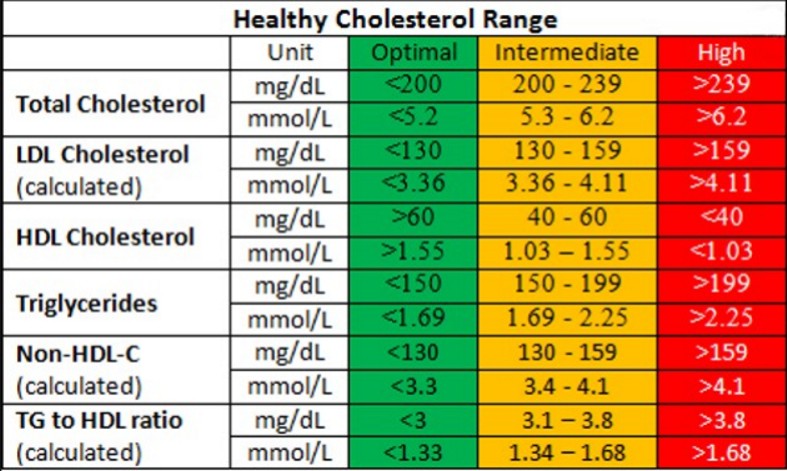
Patient’s data is extremely valuable for researchers and is used to help identify new effective treatments (drug discovery & development) in oncology, other therapeutic areas and diseases.
Bay Biosciences banks wide variety of human tissue samples and biological samples including cryogenically preserved at – 80°C.
Including fresh frozen tissue samples, tumor tissue samples, FFPE’s, tissue slides, with matching human bio-fluids, whole blood and blood derived products such as serum, plasma and PBMC’s.
Bay Biosciences is a global leader in collecting and providing human tissue samples according to the researchers specified requirements and customized, tailor-made collection protocols.
Please contact us anytime to discuss your special research projects and customized human tissue sample requirements.
Bay Biosciences provides human tissue samples (human specimens) from diseased and normal healthy donors which includes:
- Peripheral whole-blood,
- Amniotic fluid
- Bronchoalveolar lavage fluid (BAL)
- Sputum
- Pleural effusion
- Cerebrospinal fluid (CSF)
- Serum (sera)
- Plasma
- Peripheral blood mononuclear cells (PBMC’s)
- Saliva
- Buffy coat
- Urine
- Stool samples
- Aqueous humor
- Vitreous humor
- Kidney stones (renal calculi)
- Other bodily fluids from most diseases including cancer.

We can also procure most human bio-specimens and can-do special collections and requests of human samples that are difficult to find. All our human tissue samples are procured through IRB approved clinical protocols and procedures.
In addition to the standard processing protocols Bay Biosciences can also provide human plasma, serum, PBMC bio-fluid samples using custom processing protocols, you can buy donor specific sample collections in higher volumes and specified sample aliquots from us.
Bay Biosciences also provides human samples from normal healthy donors, volunteers, for controls and clinical research, contact us Now.
日本のお客様は、ベイバイオサイエンスジャパンBay Biosciences Japanまたはhttp://baybiosciences-jp.com/contact/までご連絡ください。
Special Considerations in Interpreting Liver Function Tests
DAVID E. JOHNSTON, M.D.
JOHNSTON, M.D.
A number of pitfalls can be encountered in the interpretation of common blood liver function tests. These tests can be normal in patients with chronic hepatitis or cirrhosis. The normal range for aminotransferase levels is slightly higher in males, nonwhites and obese persons. Severe alcoholic hepatitis is sometimes confused with cholecystitis or cholangitis. Conversely, patients who present soon after passing common bile duct stones can be misdiagnosed with acute hepatitis because aminotransferase levels often rise immediately, but alkaline phosphatase and γ-glutamyltransferase levels do not become elevated for several days. Asymptomatic patients with isolated, mild elevation of either the unconjugated bilirubin or the γ-glutamyltransferase value usually do not have liver disease and generally do not require extensive evaluation. Overall hepatic function can be assessed by applying the values for albumin, bilirubin and prothrombin time in the modified Child-Turcotte grading system.
The commonly used liver function tests (LFTs) primarily assess liver injury rather than hepatic function. Indeed, these blood tests may reflect problems arising outside the liver, such as hemolysis (elevated bilirubin level) or bone disease (elevated alkaline phosphatase [AP] level).
Abnormal LFTs often, but not always, indicate that something is wrong with the liver, and they can provide clues to the nature of the problem. However, normal LFTs do not always mean that the liver is normal. Patients with cirrhosis and bleeding esophageal varices can have normal LFTs. Of the routine LFTs, only serum albumin, bilirubin and prothrombin time (PT) provide useful information on how well the liver is functioning.
The general subject of LFTs1,2 and the differential diagnosis of abnormal LFTs in asymptomatic patients3–5 have been well reviewed. This article discusses some common pitfalls in the interpretation of LFTs. Hints for interpreting these tests are presented in Table 1.
Hints for interpreting these tests are presented in Table 1.
| Situation | Comments |
|---|---|
| Mildly elevated ALT level (less than 1.5 times normal) | ALT value could be normal for gender, ethnicity or body mass index. |
| Consider muscle injury or myopathy. | |
| Alcoholic hepatitis | Laboratory values can appear cholestatic, and symptoms can mimic cholecystitis. |
| Minimal elevations of AST and ALT often occur. | |
| AST level greater than 500 U per L | The AST elevation is unlikely to result from alcohol intake alone. |
| In a heavy drinker, consider acetaminophen toxicity. | |
| Common bile duct stone | Condition can simulate acute hepatitis |
AST and ALT become elevated immediately, but elevation of AP and GGT is delayed.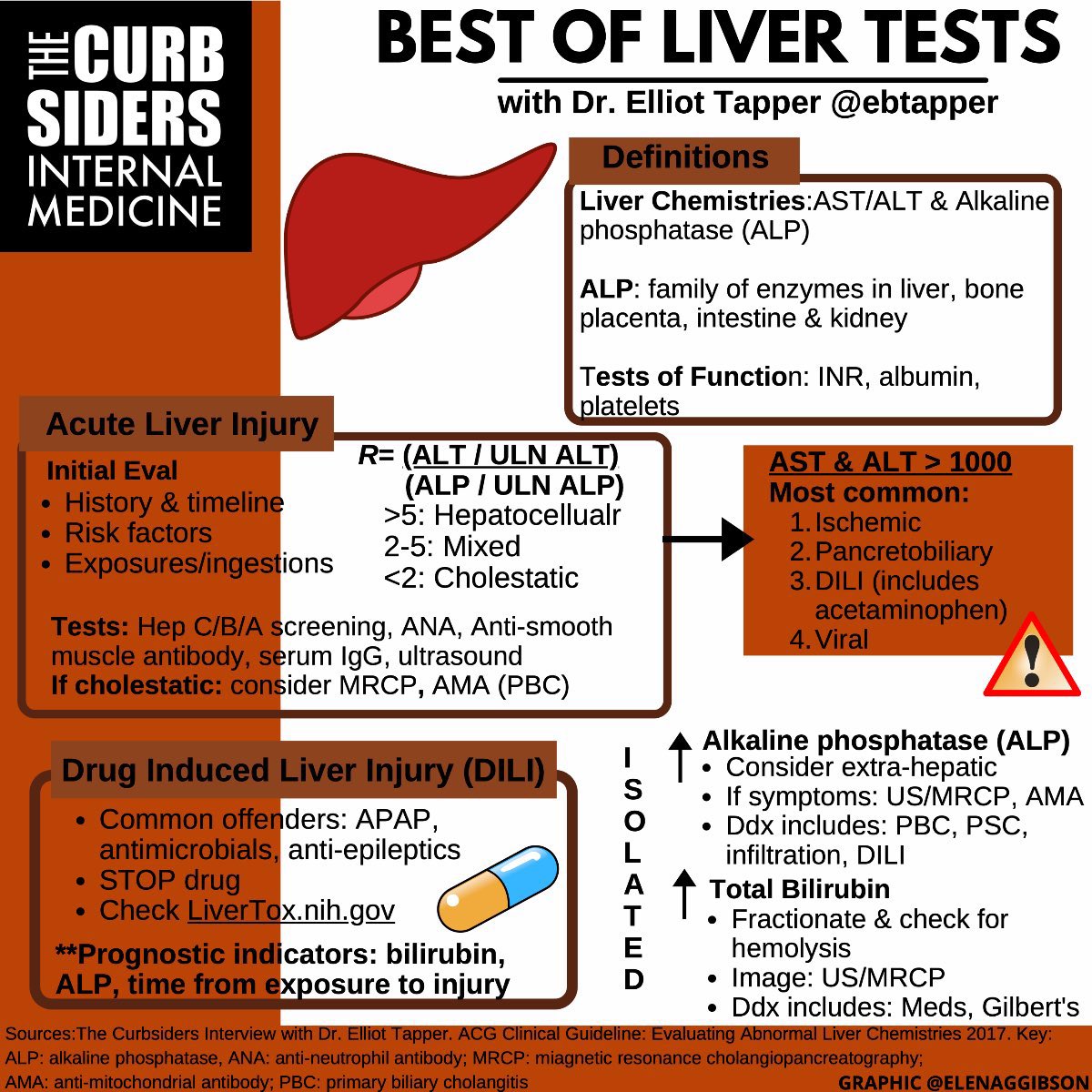 | |
| Isolated elevation of GGT level | This situation may be induced by alcohol and aromatic medications, usually with no actual liver disease. |
| Isolated elevation of AP level (asymptomatic patient with normal GGT level) | Consider bone growth or injury, or primary biliary cirrhosis. |
| AP level rises in late pregnancy. | |
| Isolated elevation of unconjugated bilirubin level | Consider Gilbert syndrome or hemolysis. |
| Low albumin level | Low albumin is most often caused by acute or chronic inflammation, urinary loss, severe malnutrition or liver disease; it is sometimes caused by gastrointestinal loss (e.g., colitis or some uncommon small bowel disease). |
| Normal values are lower in pregnancy. | |
| Blood ammonia level | Blood ammonia values are not necessarily elevated in patients with hepatic encephalopathy. |
| Determination of blood ammonia levels is most useful in patients with altered mental status of new onset or unknown origin. |
Markers of Hepatocellular Injury
The most commonly used markers of hepatocyte injury are aspartate aminotransferase (AST, formerly serum glutamic-oxaloacetic transaminase [SGOT]) and alanine aminotransferase (ALT, formerly serum glutamate-pyruvate transaminase [SGPT]). While ALT is cytosolic, AST has both cytosolic and mitochondrial forms.
Hepatocyte necrosis in acute hepatitis, toxic injury or ischemic injury results in the leakage of enzymes into the circulation. However, in chronic liver diseases such as hepatitis C and cirrhosis, the serum ALT level correlates only moderately well with liver inflammation. In hepatitis C, liver cell death occurs by apoptosis (programmed cell death) as well as by necrosis. Hepatocytes dying by apoptosis presumably synthesize less AST and ALT as they wither away.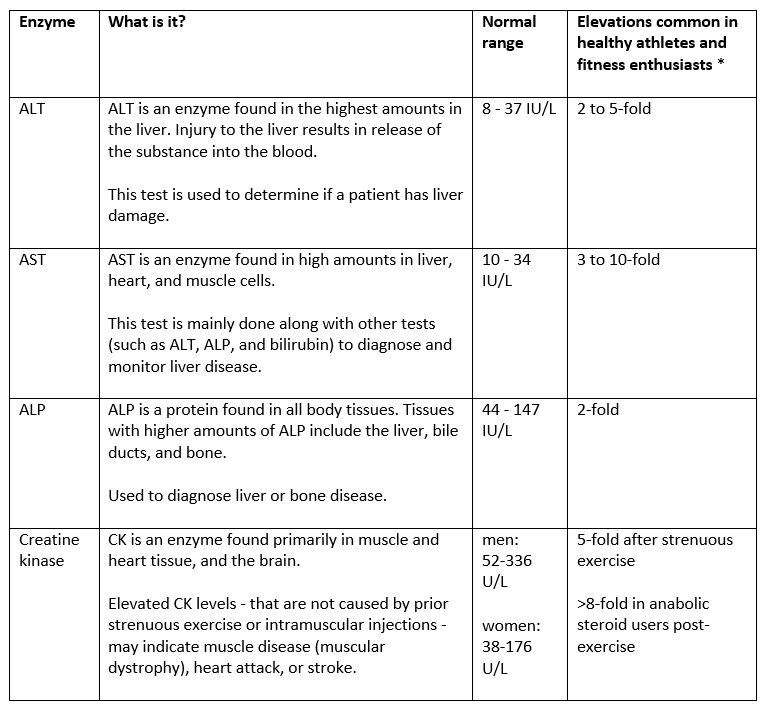 This probably explains why at least one third of patients infected with hepatitis C virus have persistently normal serum ALT levels despite the presence of inflammation on liver biopsy.6,7 Patients with cirrhosis often have normal or only slightly elevated serum AST and ALT levels. Thus, AST and ALT lack some sensitivity in detecting chronic liver injury. Of course, AST and ALT levels tend to be higher in cirrhotic patients with continuing inflammation or necrosis than in those without continuing liver injury.
This probably explains why at least one third of patients infected with hepatitis C virus have persistently normal serum ALT levels despite the presence of inflammation on liver biopsy.6,7 Patients with cirrhosis often have normal or only slightly elevated serum AST and ALT levels. Thus, AST and ALT lack some sensitivity in detecting chronic liver injury. Of course, AST and ALT levels tend to be higher in cirrhotic patients with continuing inflammation or necrosis than in those without continuing liver injury.
As markers of hepatocellular injury, AST and ALT also lack some specificity because they are found in skeletal muscle. Levels of these aminotransferases can rise to several times normal after severe muscular exertion or other muscle injury, as in polymyositis,8 or in the presence of hypothyroidism, which can cause mild muscle injury and the release of aminotransferases. In fact, AST and ALT were once used in the diagnosis of myocardial infarction.
Slight AST or ALT elevations (within 1. 5 times the upper limits of normal) do not necessarily indicate liver disease. Part of this ambiguity has to do with the fact that unlike the values in many other biochemical tests, serum AST and ALT levels do not follow a normal bell-shaped distribution in the population.9 Instead, AST and ALT values have a skewed distribution characterized by a long “tail” at the high end of the scale (Figure 1).5 For example, the mean values for ALT are very similar from one population to another, but the degree to which the distribution is skewed varies by gender and ethnicity. The ALT distributions in males and nonwhites (i.e., blacks and Hispanics) tend to have a larger tail at the high end, so that more values fall above the upper limits of normal set for the average population.10,11
5 times the upper limits of normal) do not necessarily indicate liver disease. Part of this ambiguity has to do with the fact that unlike the values in many other biochemical tests, serum AST and ALT levels do not follow a normal bell-shaped distribution in the population.9 Instead, AST and ALT values have a skewed distribution characterized by a long “tail” at the high end of the scale (Figure 1).5 For example, the mean values for ALT are very similar from one population to another, but the degree to which the distribution is skewed varies by gender and ethnicity. The ALT distributions in males and nonwhites (i.e., blacks and Hispanics) tend to have a larger tail at the high end, so that more values fall above the upper limits of normal set for the average population.10,11
AST and ALT values are higher in obese patients, probably because these persons commonly have fatty livers.12 ALT levels have been noted to decline with weight loss.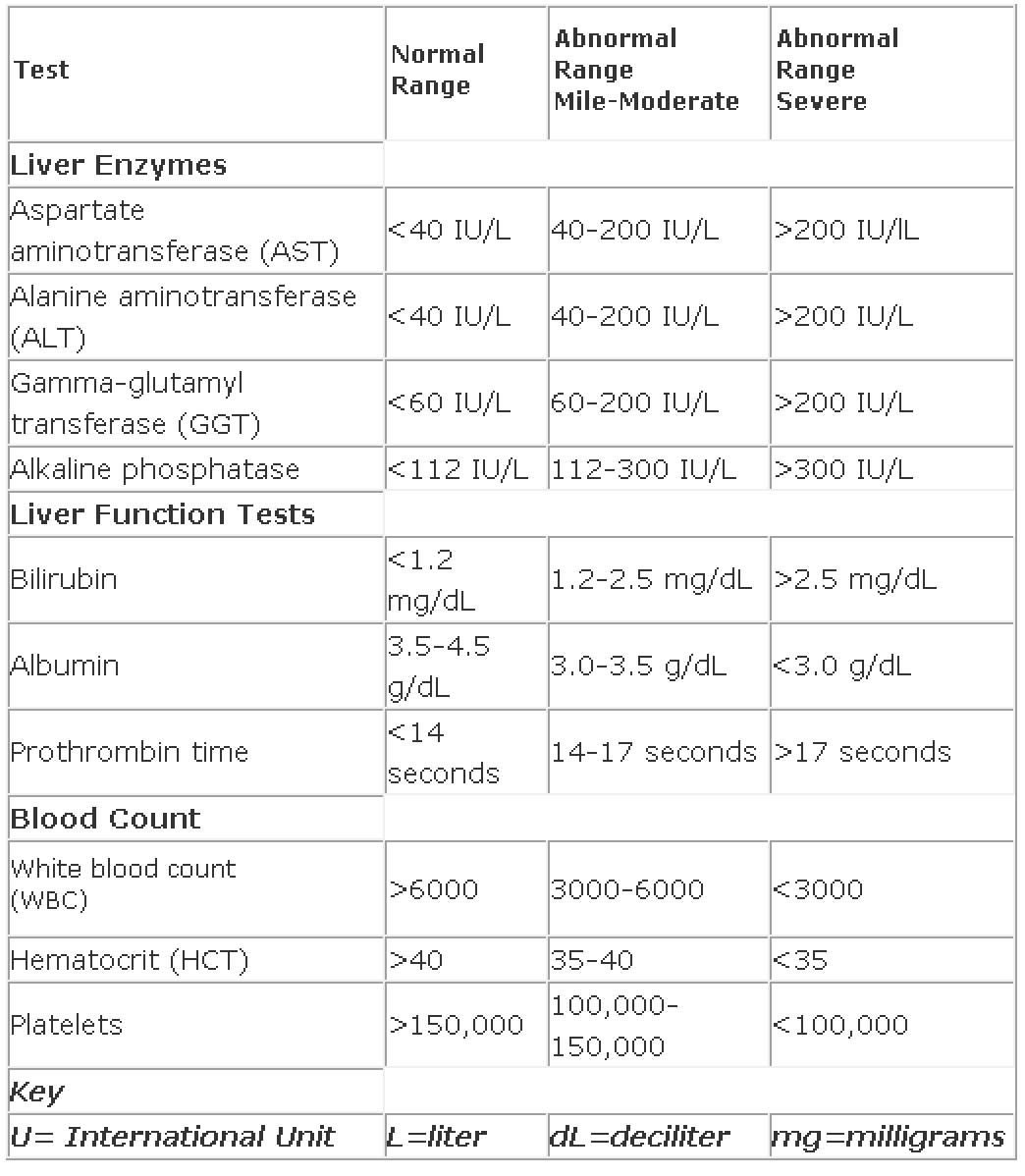 13 Depending on the physician’s point of view, the upper limits of normal for AST and ALT levels could be set higher for more obese persons.
13 Depending on the physician’s point of view, the upper limits of normal for AST and ALT levels could be set higher for more obese persons.
Rare individuals have chronically elevated AST levels because of a defect in clearance of the enzyme from the circulation.14 For both AST and ALT, the average values and upper limits of normal in patients undergoing renal dialysis are about one half of those found in the general population.15 Mild elevations of ALT or AST in asymptomatic patients can be evaluated efficiently by considering alcohol abuse, hepatitis B, hepatitis C and several other possible diagnoses (Table 2).5
The rightsholder did not grant rights to reproduce this item in electronic media. For the missing item, see the original print version of this publication.
Various liver diseases are associated with typical ranges of AST and ALT levels (Figure 2). ALT levels often rise to several thousand units per liter in patients with acute viral hepatitis. The highest ALT levels—often more than 10,000 U per L—are usually found in patients with acute toxic injury subsequent to, for example, acetaminophen overdose or acute ischemic insult to the liver. AST and ALT levels usually fall rapidly after an acute insult.
The highest ALT levels—often more than 10,000 U per L—are usually found in patients with acute toxic injury subsequent to, for example, acetaminophen overdose or acute ischemic insult to the liver. AST and ALT levels usually fall rapidly after an acute insult.
Lactate dehydrogenase (LDH) is less specific than AST and ALT as a marker of hepatocyte injury. However, it is worth noting that LDH is disproportionately elevated after an ischemic liver injury.16
It is especially important to remember that in patients with acute alcoholic hepatitis, the serum AST level is almost never greater than 500 U per L and the serum ALT value is almost never greater than 300 U per L. The reasons for these limits on AST and ALT elevations are not well understood. In typical viral or toxic liver injury, the serum ALT level rises more than the AST value, reflecting the relative amounts of these enzymes in hepatocytes. However, in alcoholic hepatitis, the ratio of AST to ALT is greater than 1 in 90 percent of patients and is usually greater than 2. 17 The higher the AST-to-ALT ratio, the greater the likelihood that alcohol is contributing to the abnormal LFTs. In the absence of alcohol intake, an increased AST-to-ALT ratio is often found in patients with cirrhosis.
17 The higher the AST-to-ALT ratio, the greater the likelihood that alcohol is contributing to the abnormal LFTs. In the absence of alcohol intake, an increased AST-to-ALT ratio is often found in patients with cirrhosis.
The elevated AST-to-ALT ratio in alcoholic liver disease results in part from the depletion of vitamin B6 (pyridoxine) in chronic alcoholics.18 ALT and AST both use pyridoxine as a coenzyme, but the synthesis of ALT is more strongly inhibited by pyridoxine deficiency than is the synthesis of AST. Alcohol also causes mitochondrial injury, which releases the mitochondrial isoenzyme of AST.
Patients with alcoholic hepatitis can present with jaundice, abdominal pain, fever and a minimally elevated AST value, thereby leading to a misdiagnosis of cholecystitis. This is a potentially fatal mistake given the high surgical mortality rate in patients with alcoholic hepatitis.19
Markers of Cholestasis
Cholestasis (lack of bile flow) results from the blockage of bile ducts or from a disease that impairs bile formation in the liver itself. AP and γ-glutamyltransferase (GGT) levels typically rise to several times the normal level after several days of bile duct obstruction or intrahepatic cholestasis. The highest liver AP elevations—often greater than 1,000 U per L, or more than six times the normal value—are found in diffuse infiltrative diseases of the liver such as infiltrating tumors and fungal infections.
AP and γ-glutamyltransferase (GGT) levels typically rise to several times the normal level after several days of bile duct obstruction or intrahepatic cholestasis. The highest liver AP elevations—often greater than 1,000 U per L, or more than six times the normal value—are found in diffuse infiltrative diseases of the liver such as infiltrating tumors and fungal infections.
Diagnostic confusion can occur when a patient presents within a few hours after acute bile duct obstruction from a gallstone. In this situation, AST and ALT levels often reach 500 U per L or more in the first hours and then decline, whereas AP and GGT levels can take several days to rise.
Both AP and GGT levels are elevated in about 90 percent of patients with cholestasis.20 The elevation of GGT alone, with no other LFT abnormalities, often results from enzyme induction by alcohol or aromatic medications in the absence of liver disease. The GGT level is often elevated in persons who take three or more alcoholic drinks (45 g of ethanol or more) per day.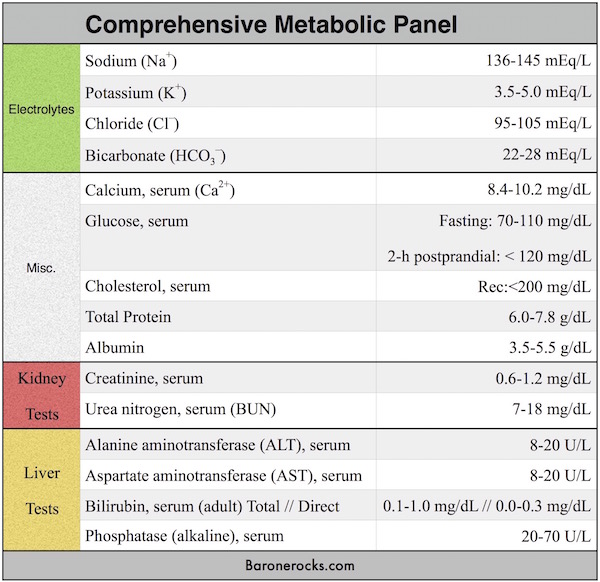 21 Thus, GGT is a useful marker for immoderate alcohol intake. Phenobarbital, phenytoin (Dilantin) and other aromatic drugs typically cause GGT elevations of about twice normal. A mildly elevated GGT level is a typical finding in patients taking anticonvulsants and by itself does not necessarily indicate liver disease.22,23
21 Thus, GGT is a useful marker for immoderate alcohol intake. Phenobarbital, phenytoin (Dilantin) and other aromatic drugs typically cause GGT elevations of about twice normal. A mildly elevated GGT level is a typical finding in patients taking anticonvulsants and by itself does not necessarily indicate liver disease.22,23
Serum AP originates mostly from liver and bone, which produce slightly different forms of the enzyme. The serum AP level rises during the third trimester of pregnancy because of a form of the enzyme produced in the placenta. When serum AP originates from bone, clues to bone disease are often present, such as recent fracture, bone pain or Paget’s disease of the bone (often found in the elderly). Like the GGT value, the AP level can become mildly elevated in patients who are taking phenytoin.22,23
If the origin of an elevated serum AP level is in doubt, the isoenzymes of AP can be separated by electrophoresis. However, this process is expensive and usually unnecessary because an elevated liver AP value is usually accompanied by an elevated GGT level, an elevated 5′-nucleotidase level and other LFT abnormalities.
In one study,24 isolated AP elevations were evaluated in an unselected group of patients at a Veterans Affairs hospital. Most mild AP elevations (less than 1.5 times normal) resolved within six months, and almost all greater elevations had an evident cause that was found on routine clinical evaluation.
Persistently elevated liver AP values in asymptomatic patients, especially women, can be caused by primary biliary cirrhosis, which is a chronic inflammatory disorder of the small bile ducts. Serum antimitochondrial antibody is positive in almost all of these patients.
Indicators of How Well the Liver Functions
BILIRUBIN
Bilirubin results from the enzymatic breakdown of heme. Unconjugated bilirubin is conjugated with glucuronic acid in hepatocytes to increase its water solubility and is then rapidly transported into bile. The serum conjugated bilirubin level does not become elevated until the liver has lost at least one half of its excretory capacity.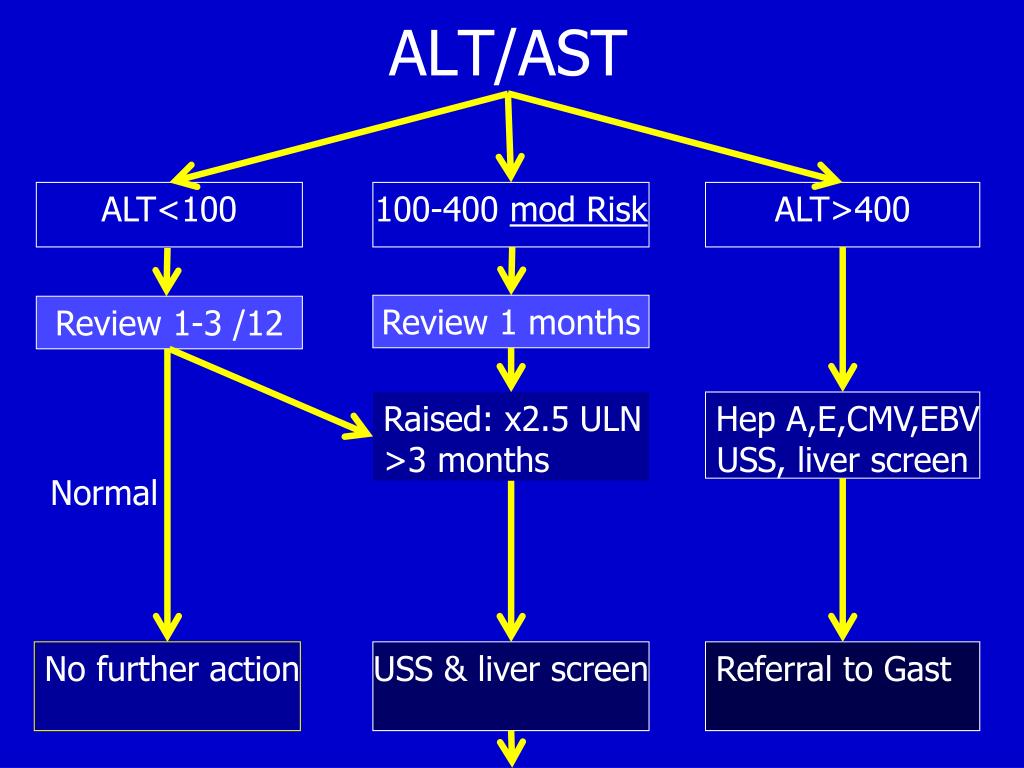 Thus, a patient could have obstruction of either the left or right hepatic duct without a rise in the bilirubin level.
Thus, a patient could have obstruction of either the left or right hepatic duct without a rise in the bilirubin level.
Because the secretion of conjugated bilirubin into bile is very rapid in comparison with the conjugation step, healthy persons have almost no detectable conjugated bilirubin in their blood. Liver disease mainly impairs the secretion of conjugated bilirubin into bile. As a result, conjugated bilirubin is rapidly filtered into the urine, where it can be detected by a dipstick test. The finding of bilirubin in urine is a particularly sensitive indicator of the presence of an increased serum conjugated bilirubin level.
In many healthy persons, the serum unconjugated bilirubin is mildly elevated to a concentration of 2 to 3 mg per dL (34 to 51 μmol per L) or slightly higher, especially after a 24-hour fast. If this is the only LFT abnormality and the conjugated bilirubin level and complete blood count are normal, the diagnosis is usually assumed to be Gilbert syndrome, and no further evaluation is required. Gilbert syndrome was recently shown to be related to a variety of partial defects in uridine diphosphate-glucuronosyl transferase, the enzyme that conjugates bilirubin.25
Gilbert syndrome was recently shown to be related to a variety of partial defects in uridine diphosphate-glucuronosyl transferase, the enzyme that conjugates bilirubin.25
Mild hemolysis, such as that caused by hereditary spherocytosis and other disorders, can also result in elevated unconjugated bilirubin values, but hemolysis is not usually present if the hematocrit and blood smear are normal. The presence of hemolysis can be confirmed by testing other markers, such as haptoglobin, or by measuring the reticulocyte count.
Severe defects in bilirubin transport and conjugation can lead to markedly elevated unconjugated bilirubin levels, which can cause serious neurologic damage (kernicterus) in infants. However, no serious form of liver disease in adults causes elevation of unconjugated bilirubin levels in the blood without also causing elevation of conjugated bilirubin values.
When a patient has prolonged, severe biliary obstruction followed by the restoration of bile flow, the serum bilirubin level often declines rapidly for several days and then slowly returns to normal over a period of weeks. The slow phase of bilirubin clearance results from the presence of delta-bilirubin, a form of bilirubin chemically attached to serum albumin.26 Because albumin has a half-life of three weeks, delta-bilirubin clears much more slowly than bilirubin-glucuronide. Clinical laboratories can measure delta-bilirubin concentrations, but such measurements are usually unnecessary if the physician is aware of the delta-bilirubin phenomenon.
The slow phase of bilirubin clearance results from the presence of delta-bilirubin, a form of bilirubin chemically attached to serum albumin.26 Because albumin has a half-life of three weeks, delta-bilirubin clears much more slowly than bilirubin-glucuronide. Clinical laboratories can measure delta-bilirubin concentrations, but such measurements are usually unnecessary if the physician is aware of the delta-bilirubin phenomenon.
ALBUMIN
Although the serum albumin level can serve as an index of liver synthetic capacity, several factors make albumin concentrations difficult to interpret.27 The liver can synthesize albumin at twice the healthy basal rate and thus partially compensate for decreased synthetic capacity or increased albumin losses. Albumin has a plasma half-life of three weeks; therefore, serum albumin concentrations change slowly in response to alterations in synthesis. Furthermore, because two thirds of the amount of body albumin is located in the extravascular, extracellular space, changes in distribution can alter the serum concentration.
In practice, patients with low serum albumin concentrations and no other LFT abnormalities are likely to have a nonhepatic cause for low albumin, such as proteinuria or an acute or chronic inflammatory state. Albumin synthesis is immediately and severely depressed in inflammatory states such as burns, trauma and sepsis, and it is commonly depressed in patients with active rheumatic disorders or severe end-stage malnutrition. In addition, normal albumin values are lower in pregnancy.
PROTHROMBIN TIME
The liver synthesizes blood clotting factors II, V, VII, IX and X. The prothrombin time (PT) does not become abnormal until more than 80 percent of liver synthetic capacity is lost. This makes PT a relatively insensitive marker of liver dysfunction. However, abnormal PT prolongation may be a sign of serious liver dysfunction. Because factor VII has a short half-life of only about six hours, it is sensitive to rapid changes in liver synthetic function. Thus, PT is very useful for following liver function in patients with acute liver failure.
An elevated PT can result from a vitamin K deficiency. This deficiency usually occurs in patients with chronic cholestasis or fat malabsorption from disease of the pancreas or small bowel. A trial of vitamin K injections (e.g., 5 mg per day administered subcutaneously for three days) is the most practical way to exclude vitamin K deficiency in such patients. The PT should improve within a few days.
BLOOD AMMONIA
Measurement of the blood ammonia concentration is not always useful in patients with known or suspected hepatic encephalopathy. Ammonia contributes to hepatic encephalopathy; however, ammonia concentrations are much higher in the brain than in the blood and therefore do not correlate well.28 Furthermore, ammonia is not the only waste product responsible for encephalopathy. Thus, blood ammonia concentrations show only a mediocre correlation with the level of mental status in patients with liver disease. It is not unusual for the blood ammonia concentration to be normal in a patient who is in a coma from hepatic encephalopathy.
Blood ammonia levels are best measured in arterial blood because venous concentrations can be elevated as a result of muscle metabolism of amino acids. Blood ammonia concentrations are most useful in evaluating patients with stupor or coma of unknown origin. It is not necessary to evaluate blood ammonia levels routinely in patients with known chronic liver disease who are responding to therapy as expected.
Grading Liver Function by Child-Turcotte Class
In communicating among themselves, many physicians use the Child-Turcotte class as modified by Pugh, often termed the “Child class,” to convey information about overall liver function and prognosis (Table 3).29 This grading system can be used to predict overall life expectancy and surgical mortality in patients with cirrhosis and other liver diseases.30
The rightsholder did not grant rights to reproduce this item in electronic media. For the missing item, see the original print version of this publication.
For elective general abdominal surgery, perioperative mortality is in the neighborhood of several percent for patients who fall into the Child class A, 10 to 20 percent for those in class B and approximately 50 percent for those in class C.31 These percentages must be balanced by prognostic considerations when transplantation becomes an option. The presence of cirrhosis by itself is not an indication for liver transplantation, and transplantation is rarely performed in patients who fall into Child class A. For example, the 10-year survival rate is as high as 80 percent in patients with hepatitis C and cirrhosis who have Child class A liver function and no variceal bleeding.32 However, once patients with any type of liver disease fall into the Child-Turcotte class B or class C category, survival is significantly reduced and transplantation should be considered.
ALT and AST what is it?
ALT ( alanine aminotransferase) and AST (aspartate aminotransferase) – belong to aminotransferase enzymes involved in amino acid metabolism. They are also called liver enzymes. They are found mainly in the cells of the liver and in other organs: pancreas, heart, kidneys, muscle tissue. A small amount of ALT and AST may appear in the blood due to physiological processes. However, in case of liver diseases (infectious or toxic hepatitis, tumor), damage to the liver cells occurs, the permeability of cell membranes is impaired and a large amount of ALT and AST enzymes are released into the blood – as a result, a cytolytic syndrome develops.
They are also called liver enzymes. They are found mainly in the cells of the liver and in other organs: pancreas, heart, kidneys, muscle tissue. A small amount of ALT and AST may appear in the blood due to physiological processes. However, in case of liver diseases (infectious or toxic hepatitis, tumor), damage to the liver cells occurs, the permeability of cell membranes is impaired and a large amount of ALT and AST enzymes are released into the blood – as a result, a cytolytic syndrome develops.
ALT and AST transaminases are specific markers of liver disease. Indications for their appointment may be the following:
- Presence of symptoms: nausea, vomiting, abdominal pain, yellowing of the skin and sclera, lethargy.
- laboratory diagnostics of liver diseases: viral hepatitis A, B, C, toxic hepatitis, non-alcoholic fatty liver disease (steatohepatitis), alcoholic liver disease, cirrhosis of the liver.
- Monitoring the dynamics of therapy for liver diseases.

Norms for the content of liver enzymes in the blood:
| Age | Men | Women | Units |
|---|---|---|---|
| 0-1 years | 13-45 | U/ml | |
| 1-60 years old | 10-40 | 7.0-35.0 | |
| 60-90 years old | 13.0-40.0 | 10.0-28.0 | |
| Over 90 years old | 6.0-38 | 5.0-24.0 | |
Reasons for increasing ALT, AST (hepatic and extrahepatic)
| Increase in ALT, AST | Acute viral hepatitis (A, B, C, D, E, Epstein-Barr virus, cytomegalovirus) | Hemolysis |
| Chronic hepatitis B, C | Hypoxic hepatitis | |
| Non-alcoholic fatty liver disease | Decreased thyroid function | |
| autoimmune hepatitis | Intense physical activity | |
| drug-induced hepatitis | Macro-AST-emia syndrome | |
| α1-antitrypsin deficiency | celiac disease | |
| Wilson’s disease | ||
| hereditary hemochromatosis |
The level of ALT in acute viral or drug-induced hepatitis can rise 50 times or more. With steatohepatitis and alcoholic liver disease, the increase in ALT is moderate – no more than 5 times. In chronic hepatitis, there is an increase in ALT by about 7 times. In cirrhosis, ALT and AST values increase by 3-5 times, while AST may be higher than ALT.
With steatohepatitis and alcoholic liver disease, the increase in ALT is moderate – no more than 5 times. In chronic hepatitis, there is an increase in ALT by about 7 times. In cirrhosis, ALT and AST values increase by 3-5 times, while AST may be higher than ALT.
During pregnancy, a woman’s body experiences an increased load, so there may be a slight increase in transaminases.
Currently, macro-AST-emia syndrome has become known – this is a rare condition in which complexes are formed in the human body from the AST molecule and immunoglobulin. This condition may be hereditary or associated with liver disease. It is characterized by a prolonged and asymptomatic increase in alanine aminotransferase in the blood.
An important diagnostic value is not only an increase in the level of transaminases, but also a decrease. A decrease in ALT and AST below normal indicates end-stage cirrhosis or severe liver damage in hepatitis. This is an extremely unfavorable sign, as it indicates the total destruction of liver cells.
ALT and AST (blood chemistry)
ALT and AST – these abbreviations can often be seen in a blood test for biochemistry. What do they mean? What can they tell the doctor? Vasilisa Vladimirovna Ishchenko, a gastroenterologist at Clinic Expert Kursk, answers our questions.
ALT and AST – these abbreviations can often be seen in a blood test for biochemistry. What do they mean? What can they tell the doctor? Vasilisa Vladimirovna Ishchenko, a gastroenterologist at Clinic Expert Kursk, answers our questions.
– Vasilisa Vladimirovna, what do the abbreviations ALT and AST mean?
– ALT, or alanine aminotransferase, is an endogenous enzyme produced by liver cells – hepatocytes. Its content in blood serum is negligible. The highest concentration of ALT is observed in the liver, so this enzyme is a specific marker of diseases of this organ. In addition, small amounts of ALT can be found in the kidneys, heart muscle, skeletal muscles, and pancreas.
AST, or aspartate aminotransferase, is also an enzyme from the group of transaminases that is involved in amino acid metabolism. It is found mainly in the liver, myocardium, nervous tissue, skeletal muscles, and to a lesser extent in the kidneys, pancreas, spleen, and lung tissue.
When cells are damaged under the influence of infectious or toxic factors, energy metabolism in cells changes. Due to a violation of the permeability of cell membranes, components of the cytoplasm and decayed intracellular structures, including enzymes, enter the blood serum. As a result, the level of ALT and AST in the blood rises. This complex of disorders is called the cytolytic syndrome.
— What will the ALT and AST indicators tell about in a biochemical blood test?
— Normally, the concentration of transaminases and their ratio among themselves in the blood plasma are constant values. They reflect the balance of formation and release of these enzymes. In addition, this balance indicates the normal course of the physiological destruction of aged cells (apoptosis). Deviation from the norm of the level of ALT and AST and a change in their ratio is observed in pathological processes.
Deviation from the norm of the level of ALT and AST and a change in their ratio is observed in pathological processes.
The degree of increase in the activity of these enzymes allows us to judge the severity of the cytolytic syndrome. However, these indicators do not always indicate the severity of organ damage and do not allow the doctor to judge the prospects for the development of the disease. Therefore, along with the analysis of ALT and AST, specialists usually prescribe a set of laboratory and instrumental examination methods, and also monitor the level of enzymes in dynamics.
— When are these tests recommended?
– Data on the level of ALT and AST may be important for such non-specific symptoms as general weakness, decreased performance, lack of appetite, nausea, vomiting, abdominal pain, flatulence, yellowing of the skin and mucous membranes. These indicators are necessarily determined for the diagnosis of diseases and the assessment of the functioning of the liver.
Read related materials:
Not always gastroscopy. Examination for pain in the abdomen
Insidious pain-mask. Does abdominal pain always indicate problems with the gastrointestinal tract?
Mom, my stomach hurts! What is hidden behind the pain in the abdomen in a child?
How not to become a balloon? Getting rid of gas formation in the intestines
Why do people turn yellow?
— What are the reasons for the increase in ALT and AST in the blood?
– Acute and chronic viral, toxic hepatitis, autoimmune diseases, fermentopathy, liver cirrhosis, tumor processes and liver metastases, infectious mononucleosis, pulmonary embolism, poliomyelitis, malaria, leptospirosis – in many pathological conditions, we observe an increase in the level of these enzymes in blood. Also, ALT and AST levels increase with myocardial infarction. Small short-term changes in their level can be observed during heavy physical exertion.
I would like to note that the ratio between ALT and AST (the so-called de Ritis coefficient) is also an important diagnostic indicator. This coefficient helps us to distinguish, for example, viral hepatitis from alcoholic liver damage, myocardial infarction from liver disease.
This coefficient helps us to distinguish, for example, viral hepatitis from alcoholic liver damage, myocardial infarction from liver disease.
Read related materials:
How to protect yourself from Botkin’s disease?
Shield and sword from hepatitis C. How to protect yourself and your loved ones?
The “silent killer” of contemporaries
Invisible disease: fatty liver disease
What can you catch on vacation? Beware of malaria!
Polio is back?
How to prevent myocardial infarction?
— What can cause a decrease in ALT and AST levels in the blood?
– Vitamin B6 deficiency, severe liver cirrhosis, pancreatic pathologies, renal failure (especially in patients on hemodialysis).
— How do blood levels of ALT and AST change during pregnancy?
– Since the liver during this period detoxifies the body of not only the mother, but also the fetus, an increase in the level of these enzymes can be observed.
— Vasilisa Vladimirovna, do you need to prepare for the test for ALT and AST? If so, which one?
– Definitely required. Blood from a vein must be taken in the morning on an empty stomach (the last meal 12 hours before the study). On the eve of the test, severe physical exertion, changes in diet, and the use of alcoholic beverages should be avoided. Half an hour before blood sampling, you should also refrain from smoking.
I want to emphasize that the determination of only the level of ALT and AST is not always sufficiently informative, therefore, most often doctors prescribe them in combination with other biochemical indicators.
Would you like to read about other tests? Articles about them can be found in our section on laboratory diagnostics
You can sign up and take tests here
ATTENTION: the service is not available in all cities
Interviewed by Sevil Ibraimova
Editorial recommends:
Blood biochemistry: frequently asked questions
Liver reboot.

 Normal values are about 9.5 to 13.8 seconds.
Normal values are about 9.5 to 13.8 seconds.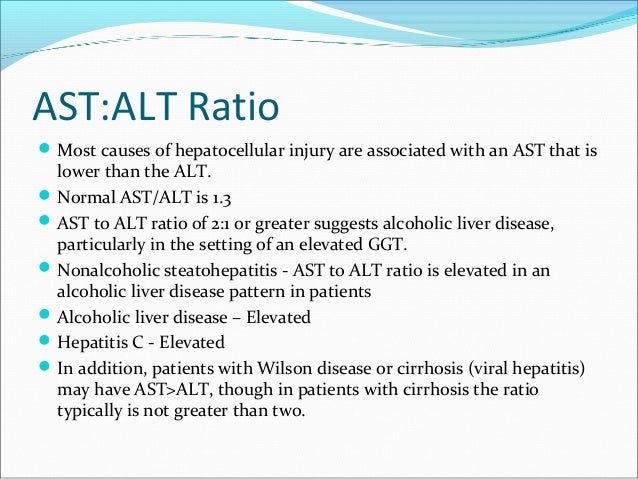 Normal platelet counts are about 150,000 to 400,000 per (µL).
Normal platelet counts are about 150,000 to 400,000 per (µL).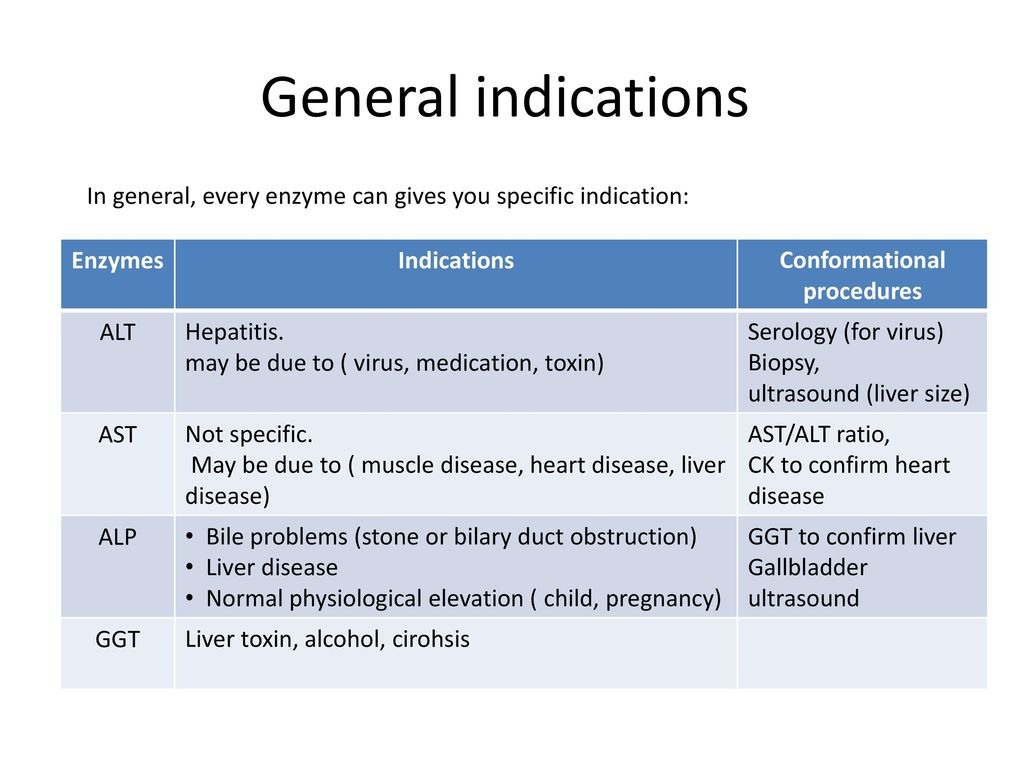 Normal levels of ALP are about 45 to 115 U/L.
Normal levels of ALP are about 45 to 115 U/L.
 In chronic alcohol liver disease or alcoholic cirrhosis, slight elevation of ALT and AST may be observed, whereas, in acute alcoholic hepatitis, high liver enzyme numbers are often seen.
In chronic alcohol liver disease or alcoholic cirrhosis, slight elevation of ALT and AST may be observed, whereas, in acute alcoholic hepatitis, high liver enzyme numbers are often seen.